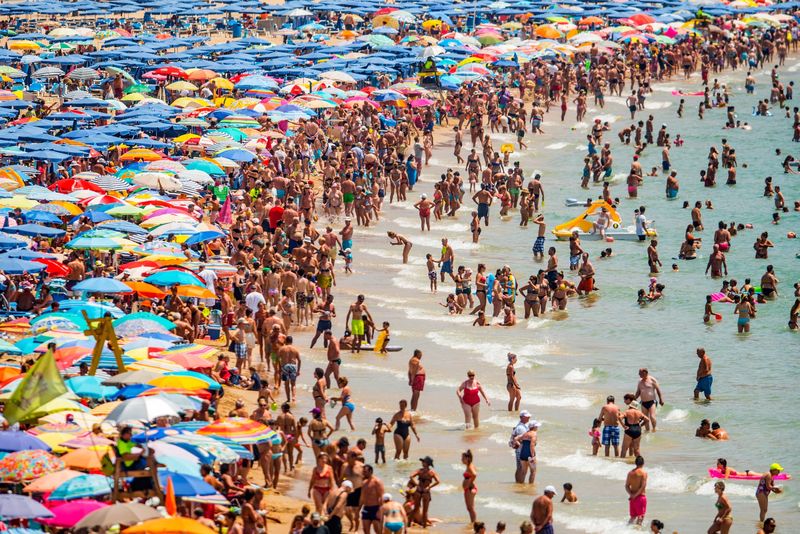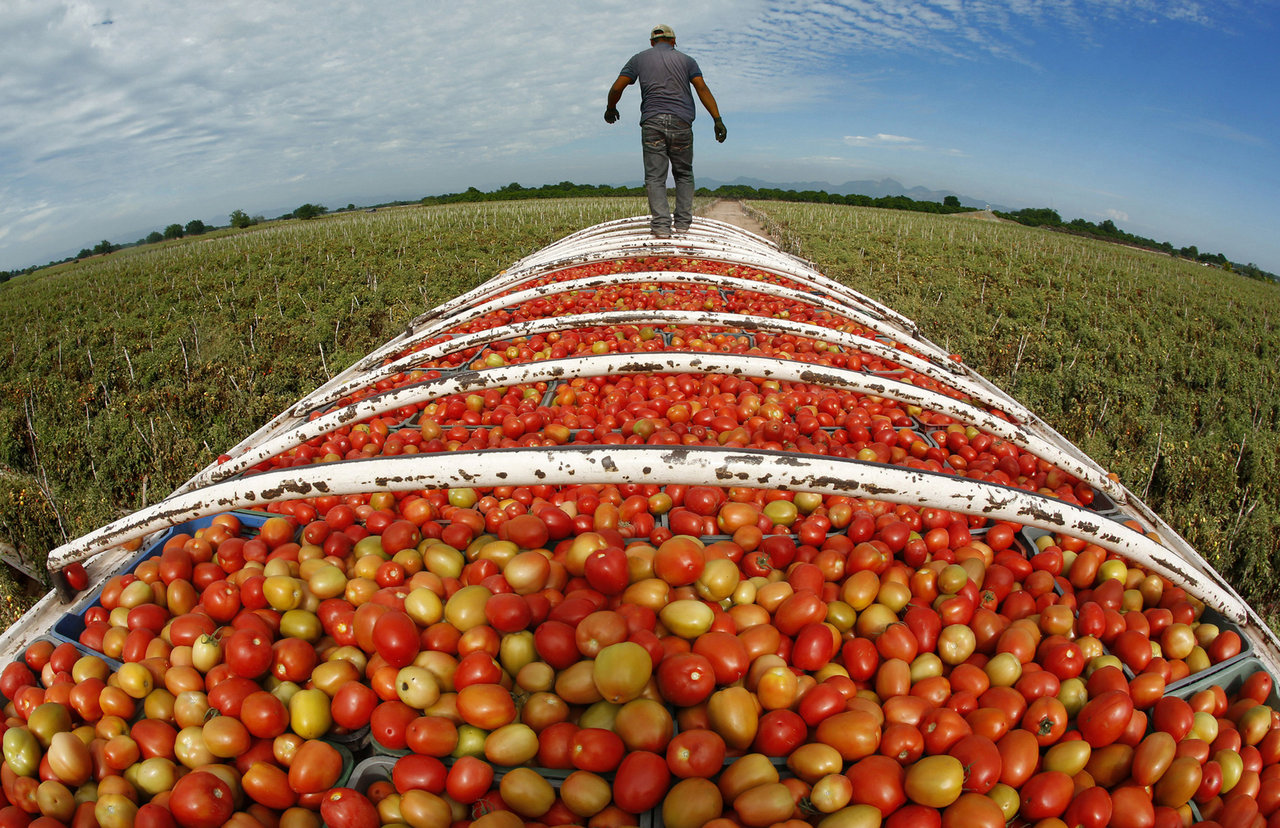
People sunbathe at Levante Beach on July 22, 2015 in Benidorm, Spain. Photographer: David Ramos/Getty Images Europe
This being Amurrika and all, I started linking to the business press a little more regularly sometime ago, to be aware of how the world looks to those who see everything through the prism of money. Bloomberg Green has some good reporters and this digression on Mass Tourism’s Carbon Impact is valuable:
a model built by and for the masses, one that thrives on low-cost flights, all-inclusive hotel resorts, giant buffets and endless sangria. Spain, the world’s No. 2 destination with 83.7 million visitors in 2019, is a magnet for mass tourism (it’s no coincidence that package tours were invented not far from where I was standing). In total, the industry flew, accommodated, fed and entertained a good chunk of the world’s 1.5 billion tourists last year.
Globally, it was a booming sector before the pandemic, growing at about 4% every year, employing 10% of the world’s workers and representing 10% of global gross domestic product. The enormous cruise ships, fossil fuel-powered planes and the hotels in remote, water-scarce locations make it incredibly carbon intensive too. Total footprint is estimated at around 8% of overall human emissions.
The sector’s climate record before the pandemic was already discouraging. Efforts to lower the carbon footprint have mostly been limited to climate neutrality pledges and headline-grabbing small steps like eliminating mini-shampoo bottles, replacing plastic straws with paper ones and serving sustainable food on flights.
Just calculating the impact is hard. Any serious account should include carbon emitted directly from tourism activities, but also from the whole supply chain, also known as Scope 3 emissions. That would involve food, accommodation, transport, fuel and shopping.
Scope 3 emissions are an important benchmark, and we should be aware of how to think about carbon footprint. As for global travel, I have been an active participant for more than twenty years. I remember at one point looking into the cost/feasibility of traveling to Europe by ship instead of plane for a completely different set of reasons. Considering it again, it still makes sense – and is completely unaffordable vs. comparable flights. The reality of mass tourism is a conundrum – yes, people need to travel, to expand their mindfulness of and about the world. Yes, small communities without other industries need viable economic lifelines. Yes, it creates an environmental disaster in more ways than ten.
Things Fall Apart. Look at the photo up top. Look at what has become of Venice. Without factoring in the true costs of these experiences – cruise ships, quick trips, cheap tour packages – the viability of these this places and practices have already fallen into great peril. They are at risk, even as they continue unchanged. The cruise ship industry is revving their engines, despite the inherent contradictions of scale. We need to re-think broadly. Disperse the destinations. Stay longer, take longer to get there. Yes, it costs more. These experiences already costs more than we think.




